| [1]Du Y, Feng C. The efficacy of tranexamic acid on blood loss from lumbar spinal fusion surgery: a meta-analysis of randomized controlled trials. World Neurosurg. 2018;119: e228-e234. [2]Wang F, Zhao KC, Zhao MM, et al. The efficacy of oral versus intravenous tranexamic acid in reducing blood loss after primary total knee and hip arthroplasty: a meta-analysis. Medicine (Baltimore). 2018;97(36):e12270.[3]Sun H, Deng J, Ning X, et al. Letter to the Editor Regarding "The Efficacy of Tranexamic Acid on Blood Loss of Lumbar Spinal Fusion Surgery: A Meta-Analysis of Randomized Controlled Trials". World Neurosurg. 2019;122:708.[4]王谦,黄国鑫,陈磊,等.髓芯减压联合自体骨髓间充质干细胞移植治疗股骨头坏死:安全和有效性的Meta分析[J].中国组织工程研究,2018,22(17):2733-2739.[5]Jadad AR, Moore RA, Carroll D, et al. Assessing the quality of reports of randomized clinical trials: is blinding necessary? Control Clin Trials.1996;17:1-12. [6]Zeng X, Zhang Y, Kwong JS, et al. The ethodological quality assessment tools for preclinical and clinical studies,systematic review and meta-analysis, and clinical practice guideline: a systematic review. J Evid Based Med. 2015;8(1):2-10. [7]Drakos A, Raoulis V, Karatzios K, et al. Efficacy of Local Administration of Tranexamic Acid for Blood Salvage in Patients Undergoing Intertrochanteric Fracture Surgery. J Orthop Trauma. 2016;30(8):409-414.[8]Lei J, Zhang B, Cong Y, et al. Tranexamic acid reduces hidden blood loss in the treatment of intertrochanteric fractures with PFNA: a single-center randomized controlled trial. J Orthop Surg Res. 2017;12(1):124. [9]Mohib Y, Rashid RH, Ali M, et al. Does tranexamic acid reduce blood transfusion following surgery for inter-trochanteric fracture? A randomized control trial. J Pak Med Assoc. 2015; 65(11 Suppl 3):S17-20.[10]Baruah RK, Borah PJ, Haque R. Use of tranexamic acid in dynamic hip screw plate fixation for trochanteric fractures. J Orthop Surg (Hong Kong). 2016;24(3):379-382. [11]Schiavone A, Bisaccia M, Inkov I, et al. Tranexamic Acid in Pertrochanteric Femoral Fracture: Is it a Safe Drug or Not? Folia Med (Plovdiv). 2018;60(1):67-78. [12]Tengberg PT, Foss NB, Palm H, et al. Tranexamic acid reduces blood loss in patients with extracapsular fractures of the hip: results of a randomised controlled trial. Bone Joint J. 2016; 98-B(6): 747-753.[13]Tian S, Shen Z, Liu Y, et al. The effect of tranexamic acid on hidden bleeding in older intertrochanteric fracture patients treated with PFNA. Injury. 2018;49(3):680-684.[14]Virani SR, Dahapute AA, Panda I, et al. Role of local infiltration of tranexamic acid in reducing blood loss in peritrochanteric fracture surgery in the elderly population. Malays Orthop J. 2016;10(3): 26-30. [15]夏国仁,李业海,刘庆.氨甲环酸腔内注射对股骨粗隆间骨折闭合髓内钉内固定潜在失血量的影响[J].安徽医药,2018,22(6): 1148-1151. [16]林锦秀,孙东升,郑潇,等.局部应用氨甲环酸干预股骨粗隆间骨折 PFNA内固定术后隐性失血的临床分析[J].山东大学学报(医学版), 2016,54(1):67-70.[17]王小军,陈永华,程昊,等.氨甲环酸应用于股骨转子间骨折的有效性和安全性分析[J].浙江医学,2017,39(16):1373-1375. [18]程辉光,段宁,马涛,等.老年不稳定性股骨转子间骨折使用氨甲环酸的有效性和安全性[J].实用骨科杂志,2017,23(12):1138-1140.[19]金志超,郑晓辉,余翔, 等.氨甲环酸降低转子间骨折围术期失血的有效性及安全性[J].中国组织工程研究,2018,22(15):2361-2366.[20]Stevens JA, Rudd RA. The impact of decreasing U.S. hip fracture rates on future hip fracture estimates. Osteoporos Int. 2013;24(10):2725-2728. [21]Foss NB, Kehlet H. Hidden blood loss after surgery for hip fracture. J Bone Joint Surg Br. 2006;88:1053-1059. [22]Yang X, Wu Q, Wang X. Investigation of perioperative hidden blood loss of unstable intertrochanteric fracture in the elderly treated with different intramedullary fixations. Injury. 2017;48(8): 1848-1852. [23]Hunt BJ. The current place of tranexamic acid in the management of bleeding. Anaesthesia. 2015;70 Suppl 1:50-53. [24]El-Menyar A, Sathian B, Asim M, et al. Efficacy of prehospital administration of tranexamic acid in trauma patients: a meta-analysis of the randomized controlled trials. Am J Emerg Med. 2018;36(6):1079-1087. [25]Wang W, Yu J. Tranexamic acid reduces blood loss in intertrochanteric fractures: a meta-analysis from randomized controlled trials. Medicine (Baltimore). 2017;96(52):e9396.[26]Zhu Q, Yu C, Chen X, et al. Efficacy and safety of tranexamic acid for blood salvage in intertrochanteric fracture surgery: a meta-analysis. Clin Appl Thromb Hemost. 2018;24(8):1189-1198.[27]Yerneni K, Burke JF, Tuchman A, et al. Topical tranexamic acid in spinal surgery: A systematic review and meta-analysis. J Clin Neurosci. 2018. doi: 10.1016/j.jocn.2018.10.121.[28]侯靖钊,包洪卫,徐鹏程,等.股骨转子间骨折术中局部和静脉应用氨甲环酸的疗效比较[J].临床骨科杂志,2017,20(6):733-735.[29]Fillingham YA, Ramkumar DB, Jevsevar DS, et al. The efficacy of tranexamic acid in total hip arthroplasty: a network meta-analysis. J Arthroplasty. 2018;33(10):3083-3089. [30]Lu VM, Ho YT, Nambiar M, et al. The perioperative efficacy and safety of antifibrinolytics in adult spinal fusion surgery: a systematic review and meta-analysis. Spine (Phila Pa 1976). 2018;43(16):E949-E958. [31]陆芸,马宝通,郭若霖,等.骨科创伤患者深静脉血栓危险因素的研究[J].中华骨科杂志,2007,27(9):693-698.[32]Weitz JI, Fredenburgh JC, Eikelboom JW. A test in context: d-dimer. J Am Coll Cardiol. 2017;70(19):2411-2420. [33]Olson JD. D-dimer: an overview of hemostasis and fibrinolysis, assays, and clinical applications. Adv Clin Chem. 2015;69:1-46. [34]Pong RP, Leveque JA, Edwards A, et al. Effect of tranexamic acid on blood loss, d-dimer, and fibrinogen kinetics in adult spinal deformity surgery. J Bone Joint Surg Am. 2018;100(9): 758-764. [35]Lewis PM, Waddell JP. When is the ideal time to operate on a patient with a fracture of the hip? A review of the available literature. Bone Joint J. 2016;98-B (12):1573-1581. [36]高化,王宝军,赵亮,等.股骨转子间骨折围术期的并发症及死亡原因分析[J].中华骨科杂志,2015,35(8):819-824.[37]Parker MJ, Handoll HH. Conservative versus operative treatment for extracapsular hip fractures. Cochrane Database Syst Rev. 2000;(2):CD000337. [38]袁志,毕龙.老年股骨转子间骨折的治疗趋势[J].中华骨科志, 2017, 37(17):1057-1060. |
.jpg) 文题释义:
文题释义: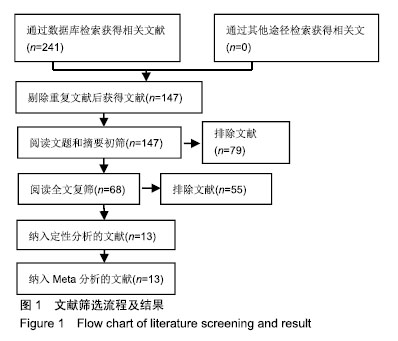
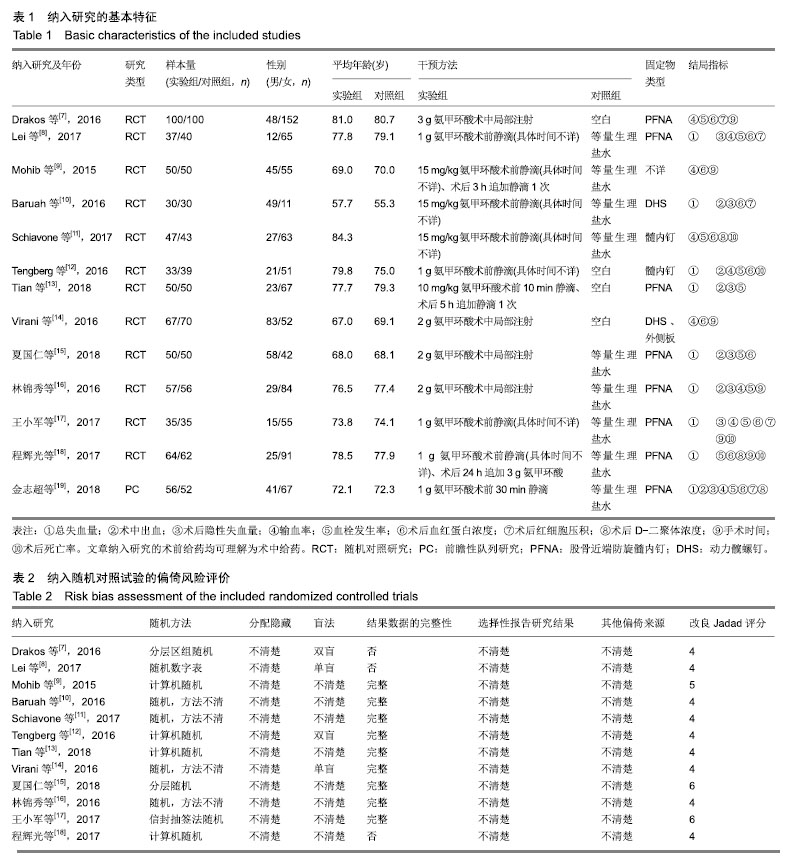
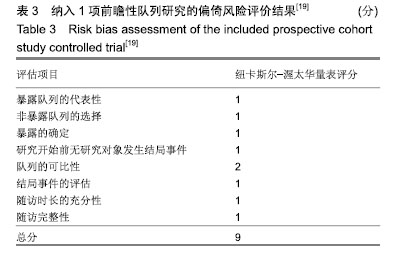

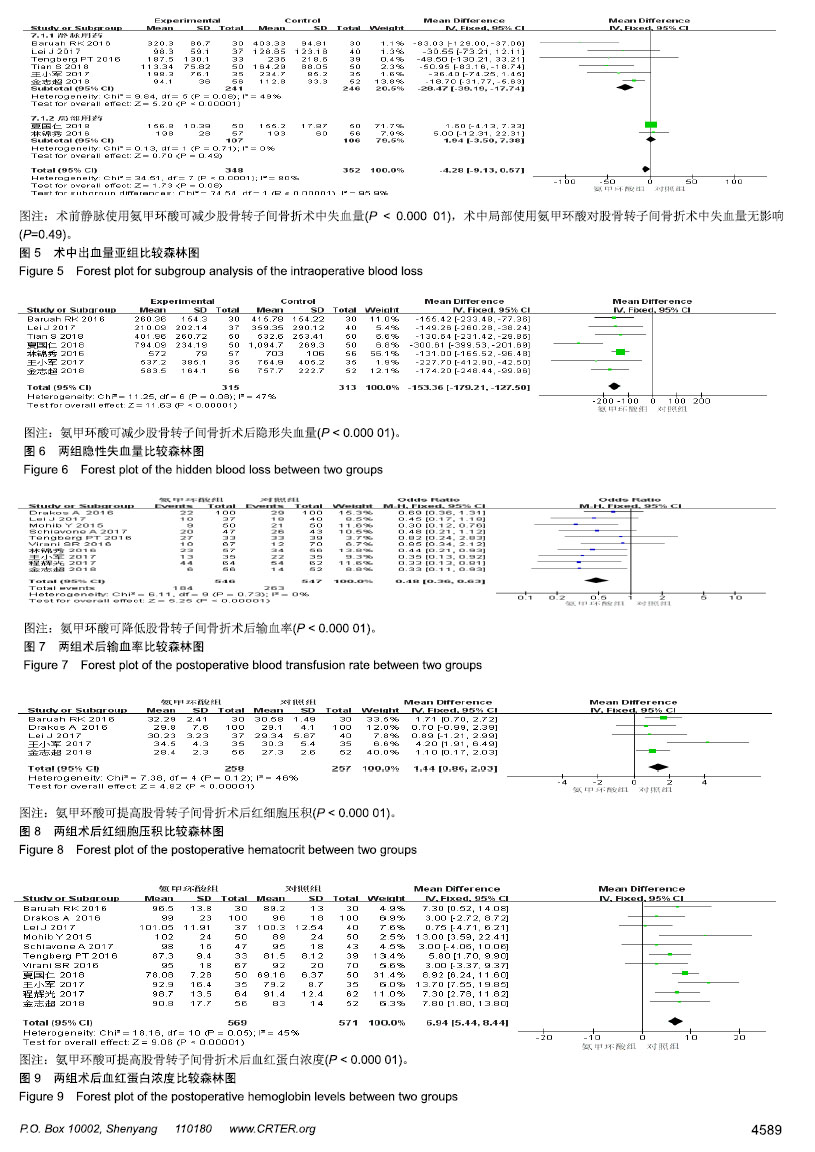
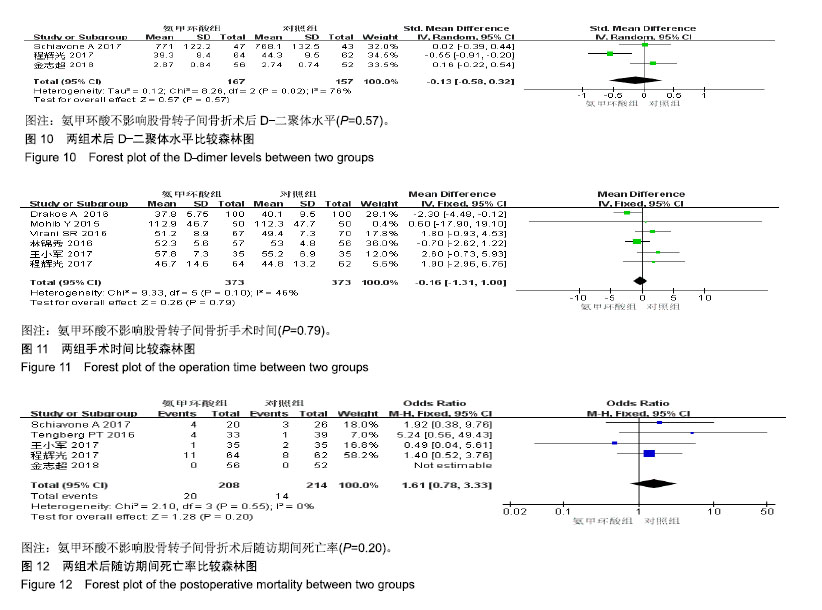
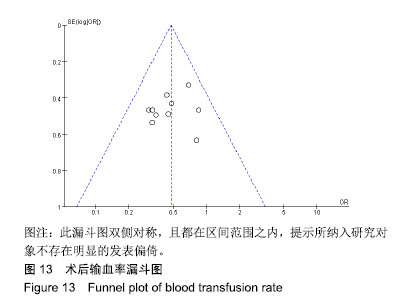
.jpg) 文题释义:
文题释义: